Description
Supply Chain Management, 5e (Chopra/Meindl)
Chapter 3 Supply Chain Drivers and Metrics
3.1 True/False Questions
1) The major drivers of supply chain performance are customers, facilities, inventory, transportation, and information.
Answer: FALSE
Diff: 2
Topic: 3.2 Drivers of Supply Chain Performance
2) The two major types of facilities are production sites and storage sites.
Answer: TRUE
Diff: 2
Topic: 3.2 Drivers of Supply Chain Performance
3) Inventory is an important supply chain driver because changing inventory policies can dramatically alter the supply chain’s efficiency and responsiveness.
Answer: TRUE
Diff: 2
Topic: 3.2 Drivers of Supply Chain Performance
AACSB: Analytic Skills
4) Information is potentially the biggest driver of performance in the supply chain as it directly affects each of the other drivers.
Answer: TRUE
Diff: 1
Topic: 3.2 Drivers of Supply Chain Performance
5) A facility with little excess capacity will likely be no more or less efficient per unit of product it produces than one with a lot of unused capacity.
Answer: FALSE
Diff: 1
Topic: 3.4 Facilities
6) The high utilization facility will have difficulty responding to demand fluctuations.
Answer: TRUE
Diff: 1
Topic: 3.4 Facilities
AACSB: Analytic Skills
7) Stock keeping unit (SKU) storage is the warehousing methodology that uses a traditional warehouse to store all of one type of product together.
Answer: TRUE
Diff: 2
Topic: 3.4 Facilities
8) Warehouse unit storage is the warehousing methodology that uses a traditional warehouse to store all of one type of product together.
Answer: FALSE
Diff: 2
Topic: 3.4 Facilities
9) The components of inventory decisions include capacity, cycle inventory, safety inventory, seasonal inventory, and sourcing.
Answer: FALSE
Diff: 1
Topic: 3.5 Inventory
10) Cycle inventory is inventory that is built up to counter predictable variability in demand.
Answer: FALSE
Diff: 1
Topic: 3.5 Inventory
11) Seasonal inventory is inventory that is built up to counter predictable variability in demand.
Answer: TRUE
Diff: 2
Topic: 3.5 Inventory
12) Companies using seasonal inventory will build up inventory in periods of low demand and store it for periods of high demand when they will not have the capacity to produce all that is demanded.
Answer: TRUE
Diff: 2
Topic: 3.5 Inventory
13) Companies using seasonal inventory will maintain a level inventory increase rate of production for periods of high demand.
Answer: FALSE
Diff: 1
Topic: 3.5 Inventory
14) A company’s ability to find a balance between responsiveness and efficiency that best matches the needs of the customer it is targeting is the key to achieving strategic fit.
Answer: TRUE
Diff: 2
Topic: 3.5 Inventory
AACSB: Analytic Skills
3.2 Multiple Choice Questions
1) Which of the following is not a major driver of supply chain performance?
A) Facilities
B) Inventory
C) Transportation
D) Information
E) All of the above are major drivers of supply chain performance.
Answer: E
Diff: 1
Topic: 3.2 Drivers of Supply Chain Performance
2) Which of the following is not a major driver of supply chain performance?
A) Customers
B) Facilities
C) Inventory
D) Transportation
E) Information
Answer: A
Diff: 2
Topic: 3.2 Drivers of Supply Chain Performance
3) The places in the supply chain network where product is stored, assembled, or fabricated are known as
A) facilities.
B) inventory.
C) transportation.
D) information.
E) customers.
Answer: A
Diff: 1
Topic: 3.2 Drivers of Supply Chain Performance
4) All raw materials, work in process, and finished goods within a supply chain are known as
A) facilities.
B) inventory.
C) transportation.
D) information.
E) customers.
Answer: B
Diff: 1
Topic: 3.2 Drivers of Supply Chain Performance
5) Moving inventory from point to point in the supply is known as
A) facilities.
B) inventory.
C) transportation.
D) information.
E) customers.
Answer: C
Diff: 1
Topic: 3.2 Drivers of Supply Chain Performance
6) The data and analysis concerning facilities, inventory, transportation, and customers throughout the supply chain is known as
A) facilities.
B) inventory.
C) transportation.
D) information.
E) customers.
Answer: D
Diff: 1
Topic: 3.2 Drivers of Supply Chain Performance
AACSB: Analytic Skills
7) The two major types of facilities are
A) distribution sites and storage sites.
B) production sites and distribution sites.
C) production sites and storage sites.
D) retail sites and distribution sites.
E) distribution sites and inventory sites.
Answer: C
Diff: 2
Topic: 3.4 Facilities
8) Which component of the supply chain decision-making framework would be established first?
A) Customer strategy
B) Supply chain strategy
C) Supply chain structure
D) Competitive strategy
E) Replenishment strategy
Answer: D
Diff: 2
Topic: 3.4 Facilities
AACSB: Analytic Skills
9) Which component of the supply chain decision-making framework would be established second?
A) Customer strategy
B) Supply chain strategy
C) Supply chain structure
D) Competitive strategy
E) Replenishment strategy
Answer: B
Diff: 2
Topic: 3.4 Facilities
AACSB: Analytic Skills
10) Which component of the supply chain decision-making framework would be used to reach the performance level dictated by the supply chain strategy?
A) Customer strategy
B) Supply chain strategy
C) Supply chain structure
D) Competitive strategy
E) Replenishment strategy
Answer: C
Diff: 1
Topic: 3.4 Facilities
AACSB: Analytic Skills
11) Which of the following is not a component of facilities decisions?
A) Warehousing methodology
B) Forecasting methodology
C) Operations methodology
D) Capacity
E) Location
Answer: B
Diff: 2
Topic: 3.4 Facilities
AACSB: Analytic Skills
12) Which of the following statements concerning decisions regarding location of facilities is false?
A) Deciding where a company will locate its facilities constitutes a large part of the design of a supply chain.
B) A basic trade-off here is whether to centralize to gain economies of scale or decentralize to become more responsive by being closer to the customer.
C) Companies must also consider a host of issues related to the various characteristics of the local area in which the facility may be situated.
D) All of these statements are true.
E) None of these statements are true.
Answer: D
Diff: 2
Topic: 3.4 Facilities
13) Which of the following is not an issue companies need to consider in facility location decisions?
A) Quality of workers
B) Product development
C) Proximity to customers and the rest of the network
D) Cost of facility
E) Tax effects
Answer: B
Diff: 2
Topic: 3.4 Facilities
AACSB: Analytic Skills
14) Which of the following is not an issue companies need to consider in facility location decisions?
A) Quality of workers
B) Availability of infrastructure
C) Proximity to customers and the rest of the network
D) Cost of facility
E) All of the above are issues companies need to consider in facility location decisions.
Answer: E
Diff: 2
Topic: 3.4 Facilities
15) Excess capacity
A) allows a facility to be very flexible and to respond to wide swings in the demands placed on it.
B) costs money and therefore can decrease efficiency.
C) requires proximity to customers and the rest of the network.
D) both A and B
E) all of the above
Answer: D
Diff: 2
Topic: 3.4 Facilities
16) Which of the following is a characteristic of a facility with excess capacity?
A) Will likely be more efficient per unit of product it produces than one with a lot of unused capacity
B) Would be very flexible and respond to wide swings in the demands placed on it
C) Would be considered a high utilization facility
D) Will have difficulty responding to demand fluctuations
E) none of the above
Answer: A
Diff: 1
Topic: 3.4 Facilities
17) A facility with little excess capacity
A) will likely be more efficient per unit of product it produces than one with a lot of unused capacity.
B) would be considered a high utilization facility.
C) will have difficulty responding to demand fluctuations.
D) All of the above are true.
E) None of the above are true.
Answer: D
Diff: 2
Topic: 3.4 Facilities
18) Which of the following would be a characteristic of a facility with little excess capacity?
A) Allows a facility to be very flexible and to respond to wide swings in the demands placed on it
B) Costs money and therefore can decrease efficiency
C) Requires proximity to customers and the rest of the network
D) Will likely be more efficient per unit of product it produces
E) none of the above
Answer: D
Diff: 2
Topic: 3.4 Facilities
AACSB: Analytic Skills
19) Which of the following is not a warehousing methodology?
A) Warehouse unit storage
B) Stock keeping unit (SKU) storage
C) Job lot storage
D) Cross-docking
E) All of the above are warehousing methodologies.
Answer: A
Diff: 2
Topic: 3.4 Facilities
20) The warehousing methodology that uses a traditional warehouse to store all of one type of product together is
A) warehouse unit storage.
B) stock keeping unit (SKU) storage.
C) job lot storage.
D) cross-docking.
E) none of the above
Answer: B
Diff: 2
Topic: 3.4 Facilities
21) The warehousing methodology in which all the different types of products needed to perform a particular job or satisfy a particular type of customer are stored together is
A) warehouse unit storage.
B) stock keeping unit (SKU) storage.
C) job lot storage.
D) cross-docking.
E) none of the above
Answer: C
Diff: 2
Topic: 3.4 Facilities
22) The following warehousing methodology is one in which goods are not actually warehoused in a facility. Instead, trucks from suppliers, each carrying a different type of product, deliver goods to a facility. There the inventory is broken into smaller lots and quickly loaded onto store-bound trucks that carry a variety of products, some from each of the supplier trucks.
A) Warehouse unit storage
B) Stock keeping unit (SKU) storage
C) Job lot storage
D) Cross-docking
E) none of the above
Answer: D
Diff: 2
Topic: 3.4 Facilities
23) All of the following are components of inventory decisions except
A) cycle inventory.
B) safety inventory.
C) seasonal inventory.
D) sourcing.
E) All of the above are components of inventory decisions.
Answer: E
Diff: 1
Topic: 3.5 Inventory
24) All of the following are components of inventory decisions except
A) capacity.
B) cycle inventory.
C) safety inventory.
D) seasonal inventory.
E) sourcing.
Answer: A
Diff: 1
Topic: 3.5 Inventory
25) The average amount of inventory used to satisfy demand between receipt of supplier shipments is referred to as
A) cycle inventory.
B) safety inventory.
C) seasonal inventory.
D) sourcing.
E) none of the above
Answer: A
Diff: 2
Topic: 3.5 Inventory
26) The inventory that is built up to counter predictable variability in demand is called
A) cycle inventory.
B) safety inventory.
C) seasonal inventory.
D) sourcing.
E) none of the above
Answer: C
Diff: 2
Topic: 3.5 Inventory
27) The inventory held in case demand exceeds expectation in order to counter uncertainty is called
A) cycle inventory.
B) safety inventory.
C) seasonal inventory.
D) sourcing.
E) none of the above
Answer: B
Diff: 2
Topic: 3.5 Inventory
28) The set of business processes required to purchase goods and services is known as
A) cycle inventory.
B) safety inventory.
C) seasonal inventory.
D) sourcing.
E) none of the above
Answer: D
Diff: 1
Topic: 3.5 Inventory
29) Cycle inventory is used because
A) the world is perfectly predictable.
B) demand is uncertain and may exceed expectations.
C) it involves making a trade-off between the costs of having too much inventory and the costs of losing sales due to not having enough inventory.
D) it focuses on processes that are external to the firm.
E) it focuses on processes that are internal to the firm.
Answer: B
Diff: 2
Topic: 3.5 Inventory
30) Seasonal inventory should be used when
A) a company can rapidly change the rate of its production system at a very low cost.
B) changing the rate of production is expensive (e.g., when workers must be hired or fired).
C) adjusting to a period of low demand without incurring large costs.
D) the world is perfectly predictable.
E) production rate is flexible.
Answer: A
Diff: 3
Topic: 3.5 Inventory
AACSB: Analytic Skills
31) Sourcing involves
A) deciding the tasks that will be outsourced and those that will be performed within the firm.
B) deciding whether to source from a single supplier or a portfolio of suppliers.
C) identifying the set of criterion that will be used to select suppliers and measure their performance.
D) selecting suppliers and negotiating contracts with them.
E) all of the above
Answer: E
Diff: 1
Topic: 3.5 Inventory
Learning Outcome: Compare and contrast different sourcing strategies including outsourcing and insourcing

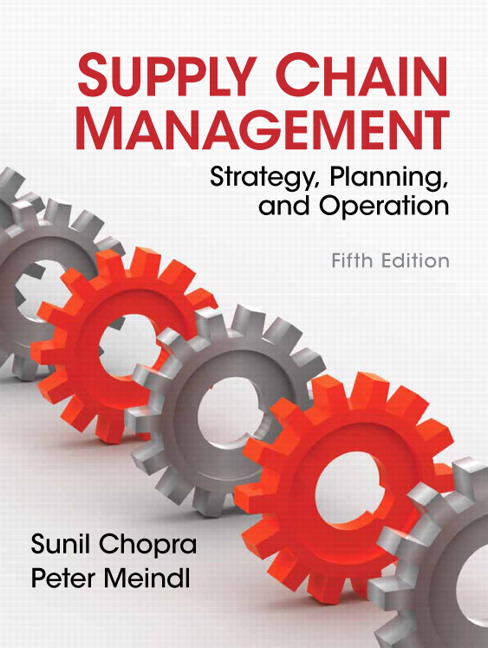
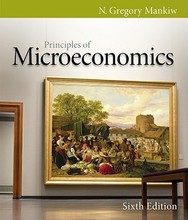
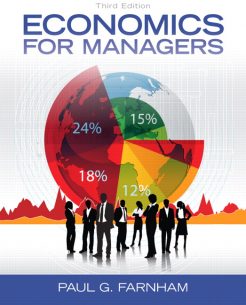
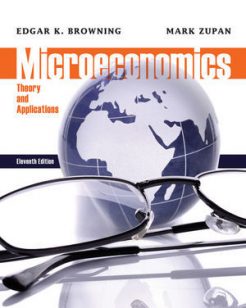
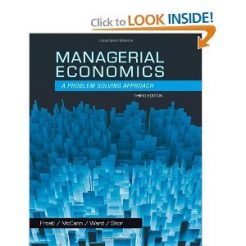

Reviews
There are no reviews yet.